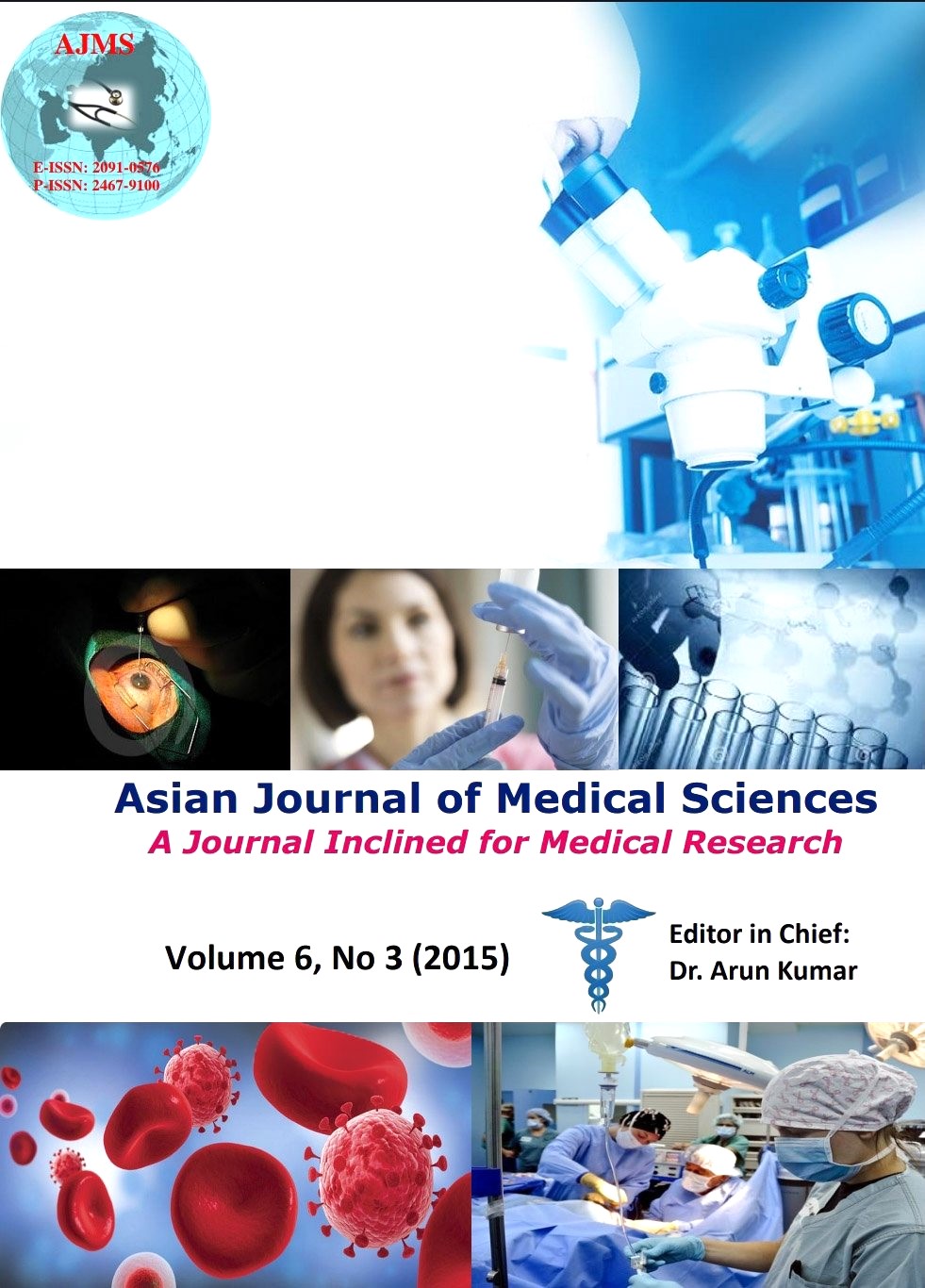Coagulation disorder in moderate to severe traumatic brain injuries
Keywords:
Traumatic brain injury, Coagulopathy, Fibrin Degradation Product, Secondary brain injuryAbstract
Background: Significant proportions of patients presenting with moderate to severe traumatic brain injuries are diagnosed as having coagulation disorder and subsequent secondary brain injury. We evaluated the incidence of coagulopathy in patient with moderate to severe traumatic brain injury in this study.
Methods: A prospective study of 100 patients with moderate to severe traumatic brain injury was carried out over a period of 2 years. Platelet count (PC), Bleeding time (BT), Clotting time (CT), Prothrombin time (PT), International Normalized ratio (INR), activated partial thromboplastin time (aPTT) and Fibrin degradation product (FDP) were measured at the time of admission and 12 hourly for 7 days. Daily D-dimer evaluation for DIC was performed in those who had abnormal value in any one of these parameters. Coagulopathy was classified as collectively 3 abnormal parameters.
Results: Among the 100 patients, 43% had severe and 57% had moderate traumatic brain injury. Coagulopathy was detected in 63% of total patients; 76.7 % (33/43) among severe traumatic brain injury and 52.7 % (30/57) among moderate (p 0.013). Multivariate statistical analysis showed deranged FDP as a significant individual predictor of coagulopathy among others (p < 0.001, Odds ratio 166.25; 95% confidence interval 31.7 + 869.7).
Conclusion: Coagulopathy is common in patients with moderate to severe traumatic brain injury. Evaluation of FDP can significantly predict coagulopathy in traumatic brain injury patients.
DOI: http://dx.doi.org/10.3126/ajms.v6i3.10730
Asian Journal of Medical Sciences Vol.6(3) 2015 22-25
Downloads
Downloads
Additional Files
Published
How to Cite
Issue
Section
License
Authors who publish with this journal agree to the following terms:
- The journal holds copyright and publishes the work under a Creative Commons CC-BY-NC license that permits use, distribution and reprduction in any medium, provided the original work is properly cited and is not used for commercial purposes. The journal should be recognised as the original publisher of this work.
- Authors are able to enter into separate, additional contractual arrangements for the non-exclusive distribution of the journal's published version of the work (e.g., post it to an institutional repository or publish it in a book), with an acknowledgement of its initial publication in this journal.
- Authors are permitted and encouraged to post their work online (e.g., in institutional repositories or on their website) prior to and during the submission process, as it can lead to productive exchanges, as well as earlier and greater citation of published work (See The Effect of Open Access).




